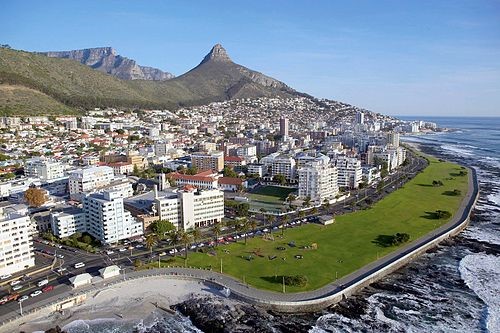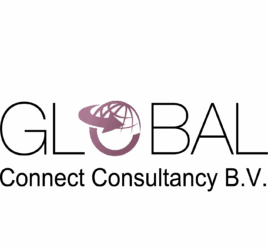
To continue the second part of the article series “Economic growth forecasts of 2024”, today’s article brings the focus on South Africa. Today we delve into the forecasts and policies for economic growth in South Africa for 2024.
South Africa’s economy is projected to grow by approximately 1.6% over the next three years. Despite experiencing the worst year of load shedding on record in 2023, with over 6,700 hours compared to about 3,700 in 2022, South Africa managed to avoid a technical recession. Real GDP growth stood at 0.6% last year. In the first half of 2023, both businesses and households invested in self-generation and rooftop solar power, boosting investment spending and helping to bridge energy shortfalls. However, household final consumption expenditure growth remained flat due to high living costs and the energy crisis. This, along with operational challenges in rail and port infrastructure, has hindered both investment and much-needed growth on both the demand and supply sides.
In February 2024, the National Treasury forecasted in its budget review that GDP growth would reach only 1.3% in 2024 and 1.6% in 2025, a more optimistic projection than that of the International Monetary Fund, which expects 0.9% in 2024 and 1.3% in 2025. Nevertheless, South Africa’s growth outlook remains considerably lower than the global economy, projected to grow by 3.2% for both 2024 and 2025. Near- to medium-term growth prospects are constrained by subdued export prices, low demand, a weaker rand, and supply-side constraints, alongside high sovereign credit risks that increase borrowing costs and limit investment and growth. High domestic interest rates also dampen consumption expenditure growth.
Nonetheless, The National Treasury’s 2024 Budget Review highlighted that load shedding and problems with freight rail and ports continue to disrupt economic activity and limit the country’s export potential. To achieve sustainable economic growth, the government is prioritizing energy and logistics reforms, along with measures to halt the decline in state capacity.
In 2023, South African consumers faced a significant rise in living costs, reducing savings for lower- and middle-income groups. Despite headline inflation cooling to 5.3% in March 2024, it has stayed between 5% and 6% since September 2023, driven by services, food, fuel, and electricity prices. The South African Reserve Bank (SARB) projects average annual inflation will drop from 6% in 2023 to 5.1% in 2024, 4.6% in 2025, and 4.5% in 2026. While rate cuts by major central banks could boost South African household consumption and confidence, the latest SARB review cautions that the path to the inflation target midpoint has become more challenging, and policy rates are expected to remain unchanged this year.
In 2023, the National Treasury appointed a new management team at Transnet. This change, along with a sector roadmap to enhance finances and operations, included selling non-core assets and partnering with international and local companies for port operations. Concurrently, the Treasury has focused on professionalizing public administration and improving governance of state-owned enterprises (SOEs) to attract investment. Over the next three years, 943 billion rand has been allocated for public infrastructure, with half designated for energy, transport, and logistics.
SOEs are expected to invest 40% of the allocated 943 billion rand. While reversing operational challenges and inefficiencies in SOEs will take time, the need to reform and ultimately fix them is critical. Significant capital investment is required, not just from the public sector but through public-private partnerships and private investment, which will also require improved business sentiment. Gross fixed capital formation continues to trend below 15% of GDP, well below the 30% target in the National Development Plan.
The February 2024 budget acknowledged the high budget deficit as a share of GDP and introduced measures and reforms to achieve a primary budget surplus while reducing borrowing in the medium term by drawing down 150 billion rand from the valuation gains of the SARB’s Gold and Foreign Exchange Reserves Account. Accessing these funds will help stabilize the government’s debt-to-GDP ratio in fiscal 2025/26 at a lower share of GDP (75.3% versus 77.7% previously anticipated in the 2023 medium-term budget policy statement). The 2023/24 fiscal year marked the first primary budget surplus since 2008/09, demonstrating the National Treasury’s commitment to reducing the country’s debt burden. The budget deficit as a share of GDP is expected to narrow to 3.3% in the 2026/27 fiscal year. To ensure sustainable government spending, a binding fiscal anchor will be required to keep spending within projected debt levels, with lower debt servicing costs allowing for spending on more productive and growth-enhancing activities.
South Africa’s political uncertainties could further impact economical growth. For the first time since the end of apartheid, the African National Congress (ANC), the governing party in South Africa since 1994, lost its majority, securing only 40.18% of the vote that took place on 29 May 2024. This dramatic change has significant implications for the country’s economic and political future, as the nation faces a period of uncertainty and potential market volatility until the political situation becomes clearer. To rule, the ANC needs support from other parties potentially through coalitions, support agreements or informal ad-hoc arrangements. A few coalition scenarios exist with different impacts on economic growth and stability. While some scenarios would be favoured by markets, others could be seen as detrimental to policy and growth. According to Johan Els, Chief Economist at the Old Mutual Group, “The uncertain political climate has already impacted financial markets, with the rand and equity indices experiencing declines. The convening of the new parliament to elect the president will be pivotal in shaping South Africa’s future political and economic direction ”.
References
BIBLIOGRAPHY Marais, H., & Pieterse, A. (2024, May 08). South Africa economic outlook, May 2024. Retrieved from Deloitte: https://www2.deloitte.com/us/en/insights/economy/emea/africa-economic-outlook.html
SAnews.gov.za. (2024, February 21). Economic growth to stay low over the next three years. Retrieved from South African Government News Agency: https://www.sanews.gov.za/south-africa/economic-growth-stay-low-over-next-three-years
EBnet.co.za (2024, June 4). Economic outlook following South Africa’s election results. Retrieved from EB.net: https://www.ebnet.co.za/economic-outlook-following-south-africas-election-results/
Photo:
